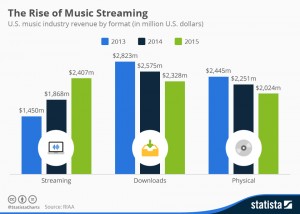Writing has always been a very important part of my life. I spent a lot of my youth writing stories and creating characters, whether I had plans to do anything with them or not. It was a way for me to express how I was feeling without having to actually talk to someone about it, and it was a way for me to make something productive out of the things that went through my head. I always did pretty well in my English classes, mostly without a great deal of effort. It’s fair to say that I floated through high school, without much care for my grades, my work, or even the teacher’s opinions of me. Not to say that I wanted to drop out, or even realized what I was doing until it was already done. I came to BCC to get myself back on track after a rather confusing year, in order to possibly transfer to a different college within 2 years.
I think that over the course of this class, I was given the opportunity to further my craft, particularly in terms of writing a formal work. Throughout high school, I had a hard time writing essays and papers. I had always found it much easier to write about things that interested me, instead of the general assignments and the “academic” workload that most schools hand out. While this class didn’t actually teach me anything, the assignments themselves served to let me take a different approach on writing each time, and I found that it was much easier to find my different strengths and weaknesses when it came to academic writing, and it allowed me to focus on those and improve.
The first essay I chose is my memoir, which focused on my first major music festival, the 2014 edition of the Vans Warped Tour. Warped Tour is a punk and metal oriented festival that happens every summer, and this was my first time there. I chose to write about it because of it’s significance in my life, as music is my most passionate hobby in life. Writing about it was a large of part of living it, because it allows me to look back on a positive time in my life, and use it to influence my outlook in the present. It was one of the better essays that I wrote for this class, and it was arguably one my favorites as well.
The second essay I wrote was my ethnography, focusing on an arts venue located in Providence, called AS220. I chose to write about this next, because it remained in the music theme that I eventually maintained the entire class, and it was logical to me, as I went from one of my first significant musical experiences, to a recent new step in my own personal musical experience. I liked focusing on AS220 because it is arguably one of the best venues for up and coming local bands to play at. Many people that I have spoken to have praised this venue, and my own experiences there have been unanimously positive. It seemed only natural to use this as the focus of my second essay, and I believe that it is my favorite of all of the essays that I worked on for this class.
The third essay was my text wrestling assignment, which focused on an article that was called “The Shazam Effect.” The article focused on the rise of digital services that have changed the way music is made, and the way that it is produced. I actually found this article very interesting, because this is a topic I have thought about and debated on my own in the past. While I believe that modern technology has allowed music to be discovered in a way based on convenience, it has also cheapened the value of a piece of music, which I believe further devalues art in our society. With the debate of schools lessening the importance of art, and focusing more on athletics and testing, it is important that music and other art forms find their place in society.
The final essay I wrote was my argumentative essay, which continued on the topic of digital platforms for music, and whether or not it cheapens the impact of music. I’ve always been against formats like radio, as it focuses too much on a select few songs with a homogeneous quality to them, which creates a formula to “success.” I believe this discredits the importance of creativity, which is what music’s foundation was always supposed to be. I liked my essay, as I believed it accurately represented my opinions on the matter, and that it was a decent defense of music, but I also didn’t necessarily enjoy writing the essay. I feel that it was because high school assigns so many of these, that it practically numbed me to it.
Overall, I’m glad that I took this class, as it allowed me to try new ways of writing. I appreciated that I was able to focus on my academic writing, and that I was able to improve on it, so that I may do well throughout my career at Bristol Community College and beyond. I thank you for reading this, and each of my essays.

